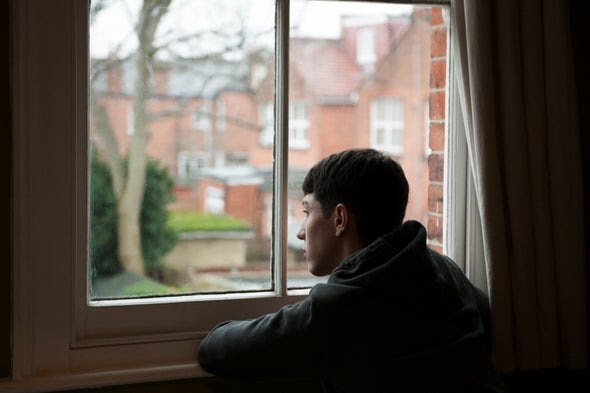Here’s advice for preserving your mental health while avoiding physical proximity
By Kasley Killam
With increasing numbers of people isolated because of quarantine and social distancing, COVID-19 is not the only public health threat we should be worried about—loneliness is one as well.

While scientists are rushing to understand how the coronavirus works, researchers have long understood the toll that social isolation and loneliness take on the body. People who do not feel connected to others are more likely to catch a cold, experience depression, develop heart disease, have lower cognitive function and live a shorter life. In fact, the long-term harm caused by loneliness is similar to smoking or obesity.
In January, a national survey found that 79 percent of Gen Zers, 71 percent of millennials and 50 percent of baby boomers feel lonely. Similarly, the proportion of people who belong to any kind of community group, such as a hobby club, sports league or volunteer group, fell from 75 to 57 percent over the past decade. Even without the coronavirus keeping us apart, it seems the majority of the population suffers from poor social health.
Although isolation is the right response to the coronavirus pandemic, we need the exact opposite in response to the loneliness epidemic. So how can you cultivate your social well-being while avoiding infection?
An obvious answer is the device you are reading this article on. People often blame technology for the prevalence of loneliness, pointing out that we spend too much time scrolling through social media and not enough of it interacting IRL. Yet recent research by my colleagues at the Harvard T. H. Chan School of Public Health paints a more nuanced picture: how you use such platforms seems to matter more than how much you do so. We can all benefit from developing digital habits that support meaningful human connections—especially now that it may be our only option until the outbreak calms.
Whether you are quarantined, working remotely or just being cautious, now is the perfect time to practice using technology in socially healthy ways. Here are a few suggestions for how to connect without contact.
Face-to-face from afar: The next best thing to in-person interaction is video chat, because facial cues, body language and other nonverbal forms of communication are important for bonding. When possible, opt for video over messaging or calling and play around with doing what you would normally do with others. For example, try having a digital dinner with someone you met on a dating app, a virtual happy hour with friends or a remote book club meeting.
One-minute kindness: Getting lots of likes on a social media post may give you a fleeting hit of dopamine, but receiving a direct message or e-mail with a genuine compliment or expression of gratitude is more personal and longer lasting—without taking much more time. When you find yourself scrolling through people’s posts, stop and send one of them a few kind words. After all, we need a little extra kindness to counter the stress and uncertainty of the coronavirus.
Cultivate your community: The basis of connection is having something in common. Whatever your niche interest is, there is an online community of people who share your passion and can’t wait to nerd out with you about it. There are also digital support groups, such as for new parents or patients with a rare disease. Use these networks to engage around what matters most to you.
Deepen or broaden: Fundamentally, there are two ways to overcome loneliness: nurture your existing relationships or form new ones. Reflect on your current state of social health and then take one digital action to deepen it—such as getting in touch with a friend or family member you haven’t spoken with in a while—or to broaden it—such as reaching out to someone you’d like to get to know.
Use a tool: Increasingly, apps and social platforms are being designed to help us optimize our online interactions with loved ones, including Ikaria, Cocoon, Monaru and Squad. If you do well with structure, these resources may be a useful option for you. Or you can consider using conversation prompts, such as TableTopics or The And, to spark interesting dialogue during a video call.
The coronavirus pandemic has reminded us that human connection can spread illness. But human connection also promotes wellness. Let’s take this opportunity to recognize the importance of relationships for our health and to practice leveraging technology for social well-being.
Read more about the coronavirus outbreak here.
Rights & Permissions
Are you a scientist who specializes in neuroscience, cognitive science, or psychology? And have you read a recent peer-reviewed paper that you would like to write about? Please send suggestions to Mind Matters editor Gareth Cook. Gareth, a Pulitzer prize-winning journalist, is the series editor of Best American Infographics and can be reached at garethideas AT gmail.com or Twitter @garethideas.
ABOUT THE AUTHOR(S)
Kasley Killam
Kasley Killam is an Master of Public Health candidate at the Harvard T. H. Chan School of Public Health and a World Economic Forum Global Shaper who specializes in social health and well-being.
Recent Articles
A Solution for Loneliness
To Combat Loneliness, Promote Social Health
The Need for Human Connection in Digital Mental Health Care

Leave a Reply